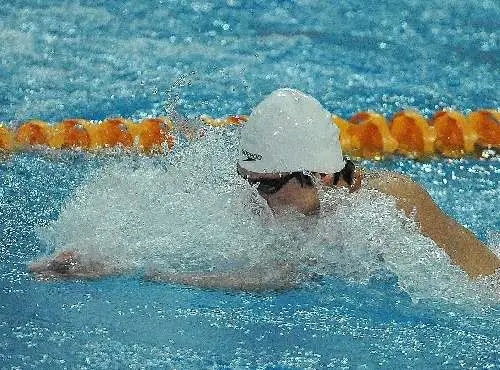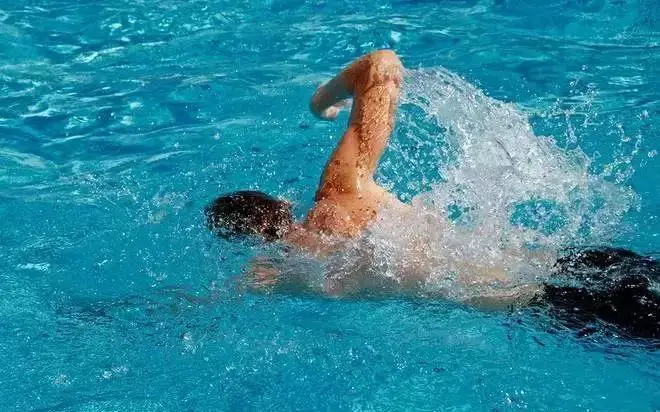
The benefits that swimming offers in terms of calories burnt depends on several variables such as age, sex, weight, body type but more importantly on the swim stroke you choose. While breaststroke is the slowest stroke, it’s perhaps the best stroke to swim in if you want to burn calories while maintaining your cardiovascular health.
According to Harvard Health Publications, a 155-pound (70 kg) individual burns about 200 calories swimming breaststroke for 30 minutes. This will vary on a few non-controllable factors such as your age, sex, weight, and body types, as well as controllable factors such as the water temperature and the intensity of your workout.
As noted, several variables affect how many calories you can burn while breaststroke swimming for 30 minutes. We’ll, therefore, go deeper into how you can burn more breaststroke calories while also looking at how it compares with other swimming strokes.
How Calories are Burned when Breaststroke Swimming
Table of Contents
To figure how many calories you can burn while swimming, it’s important to understand how your body uses calories during physical activity. Scientists generally use MET (Metabolic Equivalent) to measure how hard your body works relative to rest.
If, for example, you’re sitting on the couch watching TV or playing a video game, your body will burn 1 MET, which is equal to 1 calorie per kilogram of your body weight per hour. On the other hand, your body will burn anywhere between 3.5 METS (223 per hour) and 13.8 METS (878 calories per hour) if you’re swimming. These numbers will, of course, depend on whether you’re swimming moderately, vigorously, and on the swim stroke that you’re using.
So how are calories burned when you’re swimming? Well, the main ways to measure the number of calories burned while swimming include; directly and indirectly. Direct measurement of the calories burned while swimming requires you to monitor the amount of heat released by your body (probably using a machine). On the contrary, you can indirectly measure the number of calories burned while swimming by monitoring the exchange of oxygen and carbon dioxide by your body.
Which Swim Stroke Burns the Most Calories?
When it comes to burning calories and losing weight, not all swimming strokes are equal. Moving your body through the water exercises all your major muscle groups; from your legs, hands, and core. Incorporating different swimming strokes such as breaststroke, butterfly, backstroke, freestyle, and sidestroke can work your muscles in different ways and lead to the burning of more calories.
So which stroke burns the most calories? Let’s take a look at each swim stroke.
Butterfly – The Best
The butterfly stroke is not only the hardest to learn but also the most demanding swimming stroke. While it’s not for beginners, it works the entire body and burns the most calories. You can burn about 450 calories by swimming butterfly for about 30 minutes.
In addition to the calories that you burn through butterfly swimming, this style is the most effective if you want to tone and build your body muscles. It also helps in toning your stomach, chest, arms, back muscles, and in building your general upper body strength. The butterfly stroke is also effective in increasing your suppleness, flexibility, and is ideal in stretching out the body to improve posture.
Freestyle – Second Best
You can burn about 300 calories swimming freestyle for 30 minutes. This is, of course, the fastest stroke, so it’s ideal not just in burning calories but also in toning your shoulders, buttocks, and stomach. It also has the biggest impact if you want to tone your back muscles.
Backstroke – Third Best
Capable of helping you burn about 250 calories for 30 minutes swimming, backstroke is the best stroke if you want to improve your body posture. This is because it helps in lengthening your spine, thereby making you look taller. Needless to say, this is ideal for a 9-5 office worker or if you sit for extended periods.
It’s also effective in improving the flexibility of your hips and in toning your stomach, shoulders, buttocks, arms, and legs.
Breaststroke – Fourth Best
Although Breaststroke is a slow calorie burner, it doesn’t mean that it isn’t effective. As noted earlier, this stroke can help you burn about 200 calories for 30 minutes of swimming but is the best stroke for cardiovascular workouts. Breaststroke can also help you strengthen the lungs and the heart while also toning the chest muscles, lower legs, hamstrings, upper back, triceps, and thighs.
As you can see, breaststroke can be a slower calorie burner but its benefits perhaps outweigh the rest. Breaststroke swimming requires you to power through the water and not cut through the water. This means that your chest’s flat plane meets the water resistance while you have to rely on your legs to propel you. As such, it may be a slow calorie burner but will increase your heart’s health while expanding your lungs.
What Variables Factor into the Calories Burned while Swimming?
While it’s easy to get caught up in the numbers, certain factors affect the number of calories that you burn when swimming. Let’s look at them.
The Type of Swim Stroke
As we’ve mentioned a couple of times, the swim stroke that you choose will determine how many calories you burn while swimming. Given that butterfly is the most technical and the hardest, it helps in burning the most calories as it requires total-body muscle engagement. On the other hand, breaststroke may burn the least calories but it’s the best in strengthening your cardiovascular wellbeing.
Your Body Weight and Type
You’re more likely to burn more calories if you have more weight than your friend or partner who has less weight. This is because a larger body creates more surface area and drag resistance in the water, so you’ll need more energy to push through the resistance. This then increases your heart rate and of course, higher caloric use.
On the same note, a woman is more likely to burn fewer calories than a man. This is because a woman has more fat content in her body and may require high-intensity swimming strokes such as the butterfly stroke to perhaps burn the same calories as a man using the slow-but-sure breaststroke.
Your Swim Speed
No matter which type of stroke you choose the number of calories that you will burn swimming boils down to the intensity of your workout. In other words, how fast you swim will affect the number of calories you burn. The idea here is that the less energy you put in the fewer calories you’ll be and vice versa. Swimming faster translates to more energy use, which increases the number of calories that you burn.
Do You Burn More Calories Swimming or Running?
Truth be told, you can burn as many calories, if not more, by swimming as you would by running. It all depends on the intensity, the effort that you put in, and of course, consistency. If you run at a 10-minute mile pace, for instance, you’ll burn as many calories running as you’d in the swimming pool.
That being said, you shouldn’t be skeptical about the number of calories that you can burn swimming. If anything, running is taxing on the body and it’s a lot easier to get injured, fatigued, or burnt out. Unlike swimming, running can put increased pressure on the bones and joints, especially if you have more weight, thereby increasing your risk of getting injured.
Of course, running at a faster pace will help you burn more calories than swimming breaststroke. However, swimming breaststroke involves both aerobic and resistance exercises and might be a safer workout than running if you want to shed some extra weight and remain injury-free.
Benefits of Swimming Breaststroke
Beyond the obvious health benefits of breaststroke swimming, here are a few reasons why it might be better than running or any other swimming stroke for that matter as far as burning calories is concerned.
You Won’t Notice that you’re Working Hard
Breaststroke swimming is unquestionably the easiest way to swim and that’s why it’s even popular with beginners as well as seniors. Again, running or working out in the gym always involves putting in much effort, being sweaty, and red-faced.
Differently, the same cannot be said about breaststroke swimming. This is a slow-but-sure way of burning calories in a cool pool in a way that you’ll probably not realize that you’re working hard!
You can Breaststroke Swim for Longer
The low-impact nature of breaststroke swimming means that you can do it for longer because you won’t be feeling any soreness on your joints, muscles, and ligaments. As such, you can do it for an extended period, thereby burning more calories than other forms of strokes or exercises.
It’s a Full-Body Assault on Calories
Unlike most land-based exercises such as running where the lower body is dominated or weightlifting where it’s almost all about the upper body, swimming encompasses every part of your body, joints, and muscles. You’ll definitely notice your shrinking waistline, broadening shoulder, and even good body posture. In essence, it’s a well-round way of burning body calories.
Final Thoughts
To this end, the most important thing when it comes to burning calories through swimming is to find the stroke that works best for you. Breaststroke swimming may burn fewer calories when compared to other strokes but it’s a slow-and-sure way to burn calories. All you have to do is workout efficiently, increase the intensity, workout for long, remain consistent, take enough rest, and you’ll be on the right path to shedding some extra pounds.

